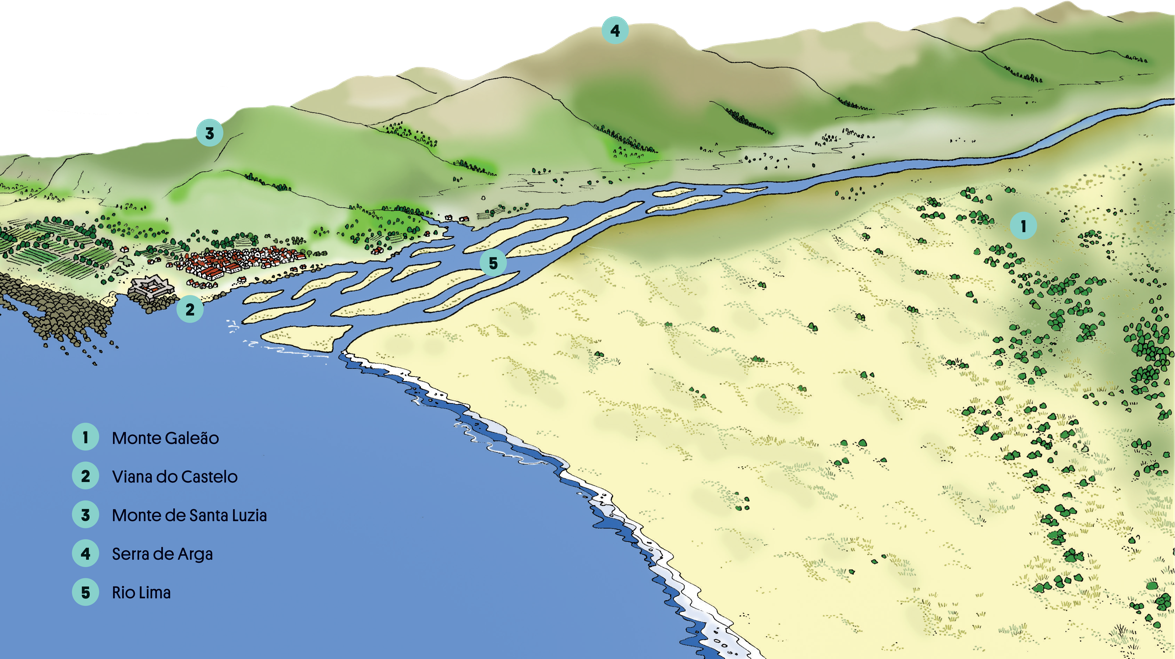Dunes are landforms made of sand that was transported by wind or water. In deserts and sandy coastal areas, wind dunes may present a variety of forms depending on sand availability, wind direction and the existence of obstacles.


In Galeão hill there are four steps at 50 m (Vila Fria step), 75 m (Ola step), 100 m (Faro de Anha step) and 160 m high (Além do Rio step). Between the 16th and 19th centuries, a colder climate and the absence of vegetation allowed the sand to spread until the top of Galeão hill. Nowadays, the remains of “climbing dunes” can be found in these steps.
The great availability of sand, strong winds, the gentle slope, and the inexistence of plants and other obstacles, allowed sand to spread off until the top of Galeão hill which is 150m high and 3 km away from the coast. This process took place between the 16th and 19th centuries.


For thousands of years, sand has been transported by the Lima river and deposited in the beaches of Viana do Castelo. During the Little Ice Age, temperatures decreased, sea-level dropped between 20 and 50 cm, sand deposition intensified, and beaches enlarged about 250 m.
As a consequence, more sand was made available to be transported by the wind thus originating wide dune fields across the Portuguese northwest coast.


Nowadays, a similar process of dune progression is taking place at Amorosa beach.










